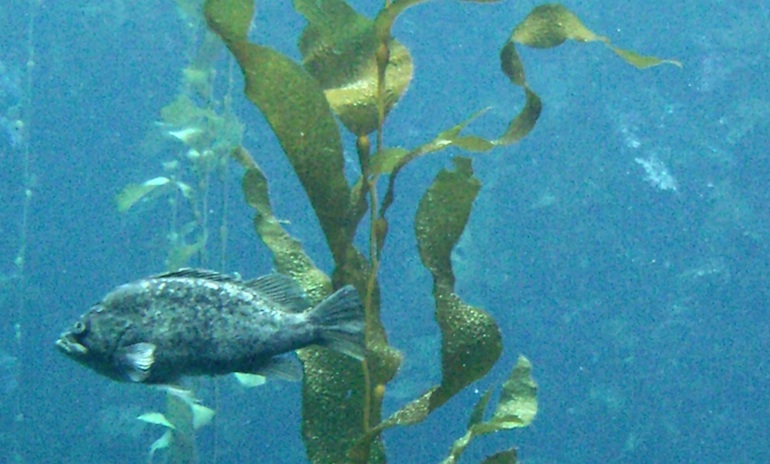
Features
Research
Researchers test kelp as a biological filter
February 21, 2014 By Siri Elise Dybal
 SINTEF Fisheries and Aquaculture in Norway is participating in a project which aims to examine the use of sugar kelp (Saccharina latissima) as a potential biological filter in cleansing hatchery effluents.
SINTEF Fisheries and Aquaculture in Norway is participating in a project which aims to examine the use of sugar kelp (Saccharina latissima) as a potential biological filter in cleansing hatchery effluents.SINTEF Fisheries and Aquaculture in Norway is participating in a project which aims to examine the use of sugar kelp (Saccharina latissima) as a potential biological filter in cleansing hatchery effluents.
Kelp grows by absorbing dissolved nutrients from the water. By cultivating kelp in the vicinity of a shore-based hatchery, the kelp will be able to take advantage of the dissolved nutrients from the facility. As a result, valuable biomass containing nitrogen and phosphorous compounds will be produced.
Exploitation of dissolved nutrients
Integrated multi-trophic aquaculture (IMTA) is a method that takes advantage of transference of nutrients from e.g. aquaculture to kelp and seaweed. On average, 1.2 kg of feed is used for each kilogram of salmon produced. The waste from these fish is a combination of feces and uneaten pellets. The pellets contain, among other things, organic compounds such as nitrogen, phosphorous and carbon.
This project considers the use of sugar kelp cultivation facilities as a catch crop for aquaculture effluents. Initially the method will be applied near a hatchery on the Smøla islands.
Quantification and modeling of absorption of nutrients
The project studies how the effluents are spread in the water, and aims to quantifiably determine the ability of the kelp to absorb nutrients. In the analysis of the spread of nutrients in the water and the uptake capacity of the kelp, the model system SINMOD is used. The project also takes into consideration capital budgeting and operating expenses for a filtration plant with kelp cultivation.
The project is a collaboration between SINTEF Fisheries and Aquaculture, Smøla Hatchery AS and Sagafisk AS which have a combined production capacity of 5.5 million salmon smolt per year.
Print this page
Advertisement
- Gov’t trout breeders step-up production in India
- New lobster hatchery could help revitalize Irish fishery





